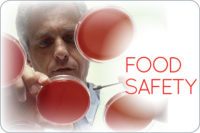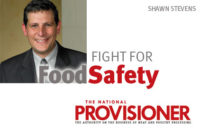Fight for Food Safety
Leaning forward in the food-safety foxhole

How is your company oriented when it comes to food safety? Is your company leaning forward in the food-safety foxhole, or hoping that if a problem happens it can hide in it instead?
All companies need to embrace food safety from the top. In the end, the establishment, effectiveness and longevity of an organization’s food-safety culture resides in a single principle. A true food-safety culture can only succeed in an organization where it is embraced from the top.
If the corporate leadership does not truly believe in food safety, neither will middle management or the line worker. And, if corporate apathy is left unchecked, the regulatory and liability exposure these organizations will face moving forward will be (and has proven to be) enormous.
Companies that have a strong food-safety culture have an enormous head start, and a related and unparalleled marketing potential relative to their competitors. Once a company embraces a strong food-safety culture, it will invariably be able to make a better product, attract more qualified employees, gain a competitive advantage in image and product quality, and better protect the long-term survival of its brand.
As to those organizations where the existing culture is weak, they need to start identifying ways to catch up. One reason many of these companies struggle is because of the historic tension between enhancing food safety (which requires that companies spend more money) and enhancing corporate profits (which requires that companies spend less). It’s pretty simple, really. But also easily overcome.
So, is there room for improvement in your organization? Well, ask a colleague the following question: “On what day of the year does it matter most how good of a job we are doing on food safety?” If the answer is, “When we have an inspection or when we have an audit,” then there is room to improve.
Whether you like it or not, the concept of food safety already has begun to outpace the simple, historic economic driver of “low cost.” Regardless of a company’s orientation, culture is culture. And, right now, being able to demonstrate a robust food-safety culture is the leading fad. I champion these efforts, and will continue to drive the concept home.
Ultimately, those companies that succeed will lead the food-safety charge, stay well ahead of this curve, and elevate food safety (and their company’s food-safety reputation and brand) to the pedestal it deserves. And, those who don’t will be left sitting behind, buried in the hole they dug for themselves.
Looking for a reprint of this article?
From high-res PDFs to custom plaques, order your copy today!









